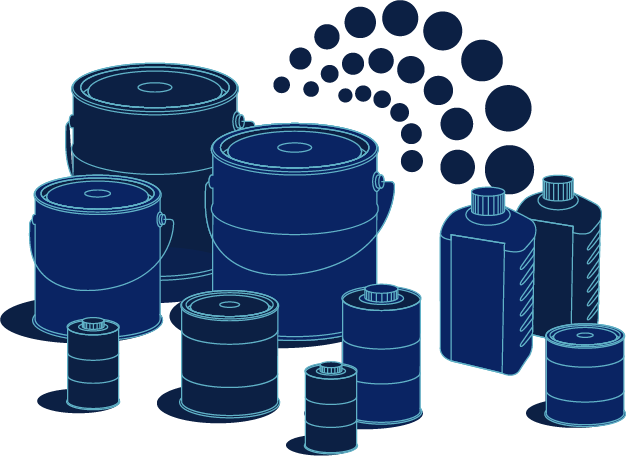ISOPOLANT PU JOINT

ISOPOLANT
PU JOINT
PU JOINT
One-component, low modulus, polyurethane sealant suitable for use in high humidity
Sealant of a low of module sealing, specifically designed for curing without the formation of bubbles even at very high temperature and humid conditions. The product exhibits excellent thixotropy, allowing it to be used even in very large expansion joints.
Material solidifies during the reaction with atmospheric moisture, generating a sealant with 50% coefficient of accommodation in the connecting nodes dynamics and has excellent adhesion to surfaces, conventionally problematic for PU sealants, such as a glass, aluminum, steel, polycarbonate, and so on.
It is recommended to use it for facades, and floor standing compounds pedestrian load.
Material solidifies during the reaction with atmospheric moisture, generating a sealant with 50% coefficient of accommodation in the connecting nodes dynamics and has excellent adhesion to surfaces, conventionally problematic for PU sealants, such as a glass, aluminum, steel, polycarbonate, and so on.
It is recommended to use it for facades, and floor standing compounds pedestrian load.
Application area
Sealing of bondings and joints:
Sealing of bondings and joints:
• Monolithic and modular concrete plates
• Deformative and expansion joints
• Brick and block works
• Brick and block work
• Angles and elements of pools and water tanks
• aluminum window frames and panels
• sealing of angles over the cladding
• sealing of showers units, etc.
Features and benefits
- The absence of bubbles and swelling when cured under difficult climatic conditions
- Superb thixotropic characteristics
- Excellent adhesion to almost any type of surface, with or without special primer coatings
- Excellent extrusion, tooling and storage stability in a wide range of climatic conditions
- Excellent chemical resistance, suitable for sealing joints in pools
- Low modular, 50% coefficient of accommodation dynamics in connecting nodes
- Resistant to fungi and microorganisms
- Excellent heat resistance, suitable for use at temperatures up to 60° C
- Resistance to cold: the sealant remains flexible even up to -40°C
Application procedure
1
Thoroughly clean the bonding and edges of the joints, joints, make sure that there are no residues of oil, grease, wax and silicone. The substrate must be dry, chemically neutral, even, strong, clean - free of dust, rust or flaking particles.
For many surfaces a primer is not required. In the case of application to a very porous surface must be carefully primed to avoid getting air bubbles in the uncured sealant. Recommended primer is ISOPOLANT MS.
For many surfaces a primer is not required. In the case of application to a very porous surface must be carefully primed to avoid getting air bubbles in the uncured sealant. Recommended primer is ISOPOLANT MS.
2
For control and expansion joints, it is necessary to apply closed cell backer rods. The use of a backer rod is important because it ensures a correct ratio of width to depth and it makes possible the appliance of the sealant.
Install the nozzle in the applicator gun, having previously cut the tip to the required size. Cut off the very end of the sealant packaging and insert into the applicator gun.
Squeeze the sealant into the joint so that there are no empty spaces and immediately process with a spatula.
Install the nozzle in the applicator gun, having previously cut the tip to the required size. Cut off the very end of the sealant packaging and insert into the applicator gun.
Squeeze the sealant into the joint so that there are no empty spaces and immediately process with a spatula.
3
The ratio of width to depth should be 2:1, taking into account a minimum depth of 10 mm.
Flow rate
Line meters on 600 ml in tubes:
width \ depth
5mm
10mm
15mm
20mm (25mm)
5mm
24
12
6
3 (1,5)
10mm
12
6
3
1,5 (0,75)
15mm
6
3
1,5
0,75(0,35)
General information
600 ml in tubes.
Can be kept for minimum 12 months in the original unopened packaging when stored in dry places and at a temperature from 5° C to 25° C. Once opened, use as soon as possible.
The MSDS (Material Safety Data Sheet) is available on request.
Technical specifications
Properties
Units
Method
Specification
Specific
g/cm3
ASTM D1475 / DIN 53217 / ISO 2811, at 20°C
+/-1.4
Drying time at 77° F (25° C) and 55% RH
hours
-
2-3
Drying depth rate
mm/day
-
2 – 3
Service temperature
°C
-
-40 to 80
Hardness
Shore A
ASTM D2240 / DIN 53505 / ISO R868
±28
Resilience modulus at 100% elongation
(N/mm2)
ASTM D412 / EN-ISO-527-3
0.35
Elongation
%
ASTM D412 / EN-ISO-527-3
>600
QUV Accelerated Weathering Test (4 hours UV, at 60° C (UVB - Lamps) and 4 hours COND at 50° C)
-
ASTM G53
Passed
(after 2000 hours)
(after 2000 hours)
Thermal resistance (100 days, 80° C)
-
EOTA TR011
Passed
Toxicity
-
-
No restrictions as cured completely
Resilience
%
DIN 52458
>90
Hydrolysis (8% KOH, 15 days at 50° C)
-
-
No elastomeric property change
Hydrolysis (H 2 O, 30-day cycle 60-100° C)
-
-
No elastomeric property change
HCl (pH = 2, 10 days at normal temperature)
-
-
No elastomeric property change
Adhesion to concrete
kg/cm2
(N/mm2)
(N/mm2)
ASTM D4541
>20
(>2)
(>2)
Get TDS on this material
ANT ALLIANCE is an exclusive supplier of ISOPOLANT products worldwide.
